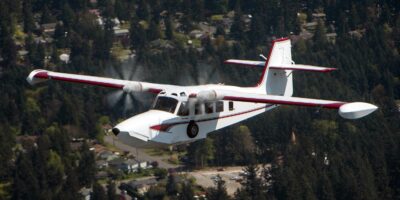Last month I made a case for what I believe is a much-needed independent oversight of the CAA. In response I’ve had quite a few people tell me of more perceived CAA wrongs, I’ve encouraged Grant Shapps, the Secretary of State at the Department of Transport to address the issue (I’m pleased to say that he’s a reader of this column), and next week I’ve been invited on to a call with Rob Bishton, the CAA’s Group Director of Safety and Airspace, and Sir Stephen Hillier, the CAA’s new Chairman. I’m under no illusions about my vanishingly small influence, but I hope to have the opportunity to fully explain my concerns, most of which I think should be held by others wanting our regulator to be the very best that it can be, particularly with the momentous challenge it looks like facing in January.
Sadly, we’re currently seeing another example of the CAA managing to snatch defeat from the jaws of victory. The announcement by the DfT and CAA of grants towards Electronic Conspicuity (EC) was very welcome. It’s been a topic of growing interest, thanks in no small part to the proselytising and largely volunteer team at PilotAware.
The CAA’s CAP1391 opened the door to EC at significantly lower cost, and the regulator showed the way with its previous statement stating that ADS-B over 1090MHz being their preferred EC solution. It would have made sense, and helped General Aviation collectively, had the grant money been somehow tied to the achievement of that aim.
“The CAA’s CAP1391 opened the door to EC at significantly lower cost”
I asked the CAA about the policy and its reply read to me as if it might need some double line spacing: ‘While we are working with the DfT on a full policy for Electronic Conspicuity we do acknowledge the current equipage position of EC in the UK. For the rebate scheme the Government wanted to recognise that the GA community has put considerable effort into developing local solutions for EC devices. We do, though, all recognise that devices need to successfully interact with each other to obtain the maximum benefit from EC. We have recommended that anyone purchasing an EC device makes sure they are fully aware of what individual devices can and cannot do’.
So let me get this right. The Government (which I assume means the DfT) wants to recognise that the community has developed a non interoperable standard? I mean chapeau to the team at PilotAware (who this undoubtedly is referring to), but where’s the logic in promoting something that’s not interoperable?
As the DfT seems to have been heavily involved in this I figured I’d ask them too… A Department for Transport spokesperson said, “We support the increased use of Electronic Conspicuity (EC) in UK airspace and the Department alongside the CAA are continuing to develop a long-term strategy for EC use in the UK, which we are continuing to engage the GA sector on. In the meantime, GA pilots have access to a grant to help finance devices that they deem fit based on their own needs.”
Hmmm, I thought we had a policy and that it was pretty much inline with most of the rest of the world.
I get that PilotAware has done an amazing job on promoting EC. I admire its innovative approach, its ability to mobilise and motivate large numbers of volunteers. This is not about PilotAware’s ability to receive, but about a number of its users who consider that P3i, something that can only be seen by other PilotAware users, is all the EC they need.
ADS-B isn’t perfect, and like everything else it’ll eventually get replaced by something better, but that’s just not going to be something on a public unprotected frequency, or a network of volunteer-built uplink stations attached to various parts of people’s houses. I’m at a complete loss to understand what’s going on here, but whoever’s driving it has got the own goal thing cracked.
On a related subject, I asked the CAA why it had not rewritten CAP1391 to allow SDA=1 along with SIL=1. Without getting technical, that would allow TCAS systems used on airliners and bizjets as well as GA aircraft fitted with active traffic systems (which are pretty common among more modern GA aircraft), not to mention the RAF’s fleet of Grob Tutors which, in 2011, were equipped with Avidyne’s traffic system at a cost of nearly £3m, to see aircraft transmissions which would otherwise be blocked by the TSO requirements in the receivers. At least one manufacturer of a CAP1391 device is saying that it is ready and capable of having both SIL and SDA set to 1.
The CAA’s reply was, “We do plan to update CAP1391 to make it more of a universal standard for more airspace users. In the immediate future we are considering an option of following the CASA approach that would ask manufacturers to declare that they meet some of the certified aspects of a TSO.”
I think that means they’re working on it. Please hurry up.







